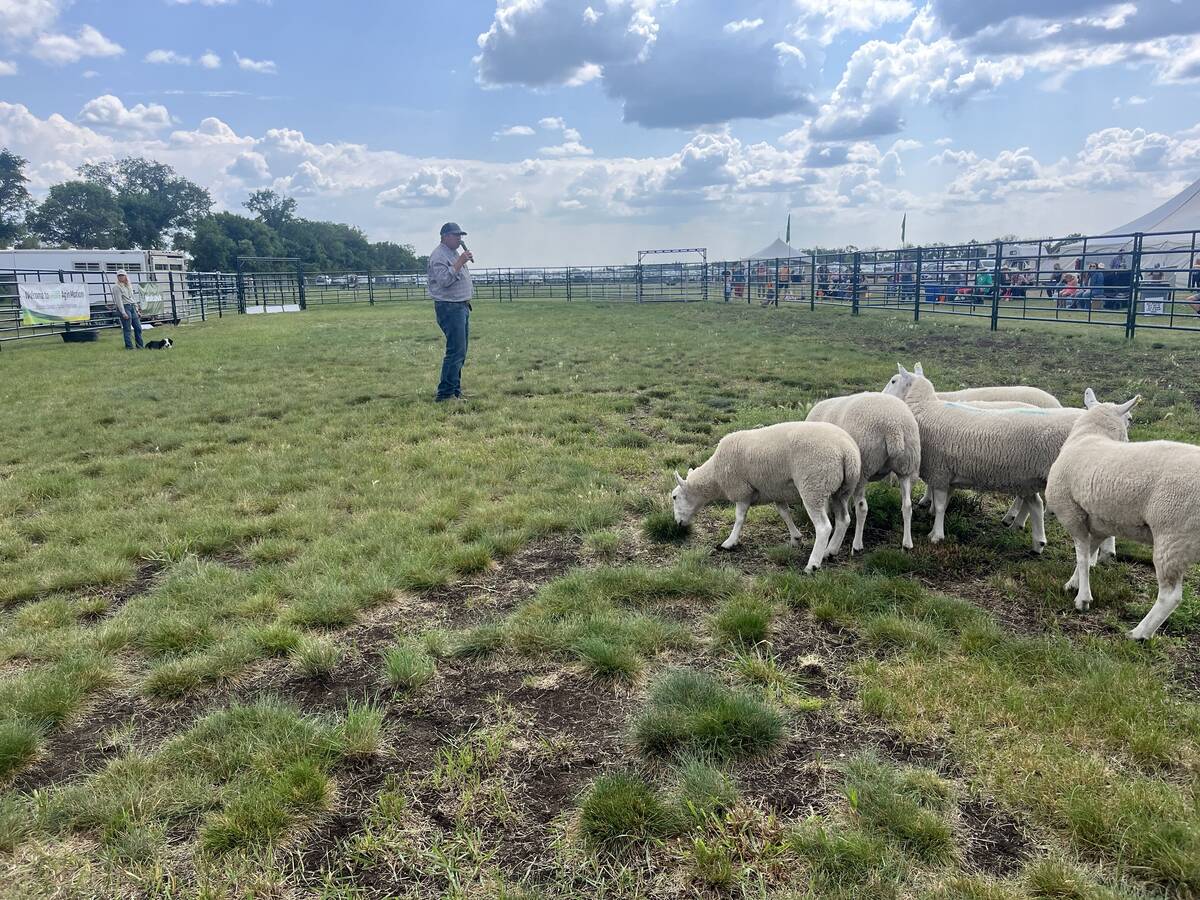INDIAN HEAD, Sask. — A new fertilizer product from Yara is being tested at three Saskatchewan re-search sites this year.
Amidas is a 40-0-0-5.5 granular product with nitrogen and sulfate in every granule. The company said it is the only commercially available granular fertilizer in Western Canada that offers this unique analysis.
The nitrogen-sulfur ratio is 7:1, which Yara says better matches crop nutrient demand. The product offers the potential for better nitrogen use efficiency and flexibility in fertilizer application, said spokesperson Troy McInnis.
Viterra is testing the product on research farms at Indian Head, Melfort and Swift Current.
Read Also

Stock dogs show off herding skills at Ag in Motion
Stock dogs draw a crowd at Ag in Motion. Border collies and other herding breeds are well known for the work they do on the farm.
Agronomy manager Rigas Karamanos told farmers at an Indian Head field day that he is testing Amidas against a control, urea alone and urea with an equivalent amount of ammonium sulfate. The applications were 80 pounds, both banded and broadcast.
The trial was also repeated at 120 pounds.
McInnis said the research is designed to find out how Amidas compares to other fertilizers and how effective it is as a nitrogen-sulfur fertilizer.
It is also intended to determine how effective Amidas is at reducing ammonia volatilization losses from broadcast nitrogen.
“Early observations substantiate Amidas as an effective nitrogen and sulfur fertilizer,” he said.
This is just the first year of testing. Karamanos said he can see responses to the fertilizer, particularly at Melfort, where the soils are both nitrogen and sulfur deficient.
“You see responses, but I cannot see anything visual that suggests I am preventing urea from volatilization,” he said.
McInnis said research will continue in that area. Banded applications are still recommended to reduce volatilization losses, he said.
Karamanos noted that as farms become bigger, producers are looking at how to band fertilizer and cover the whole farm in a reasonable time. Broadcasting is faster but doesn’t put the fertilizer in the right place, he said.
“However, they are considering what is the difference between seeding and fertilizing the whole 20,000 acres or banding 15,000 acres,” he said.
Growers could save time and money with a product that provides both nitrogen and sulfur, said McInnis, as blending costs would be reduced.
“One grower commented how much easier seeding was with Amidas, given that he could use one truck to haul his nitrogen and sulfur to the field versus two,” he said.
Amidas is manufactured at the Yara facility in The Netherlands. Production in North America is under consideration.

















